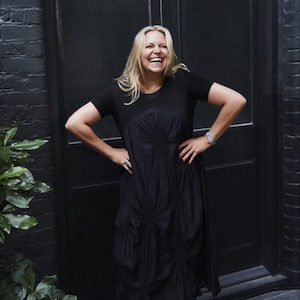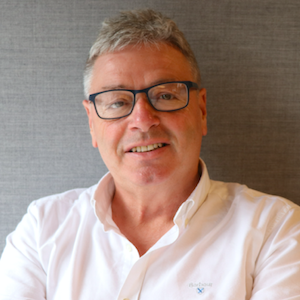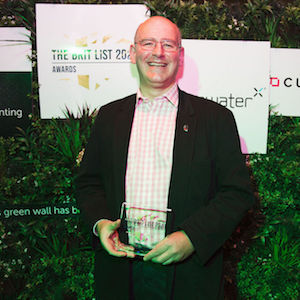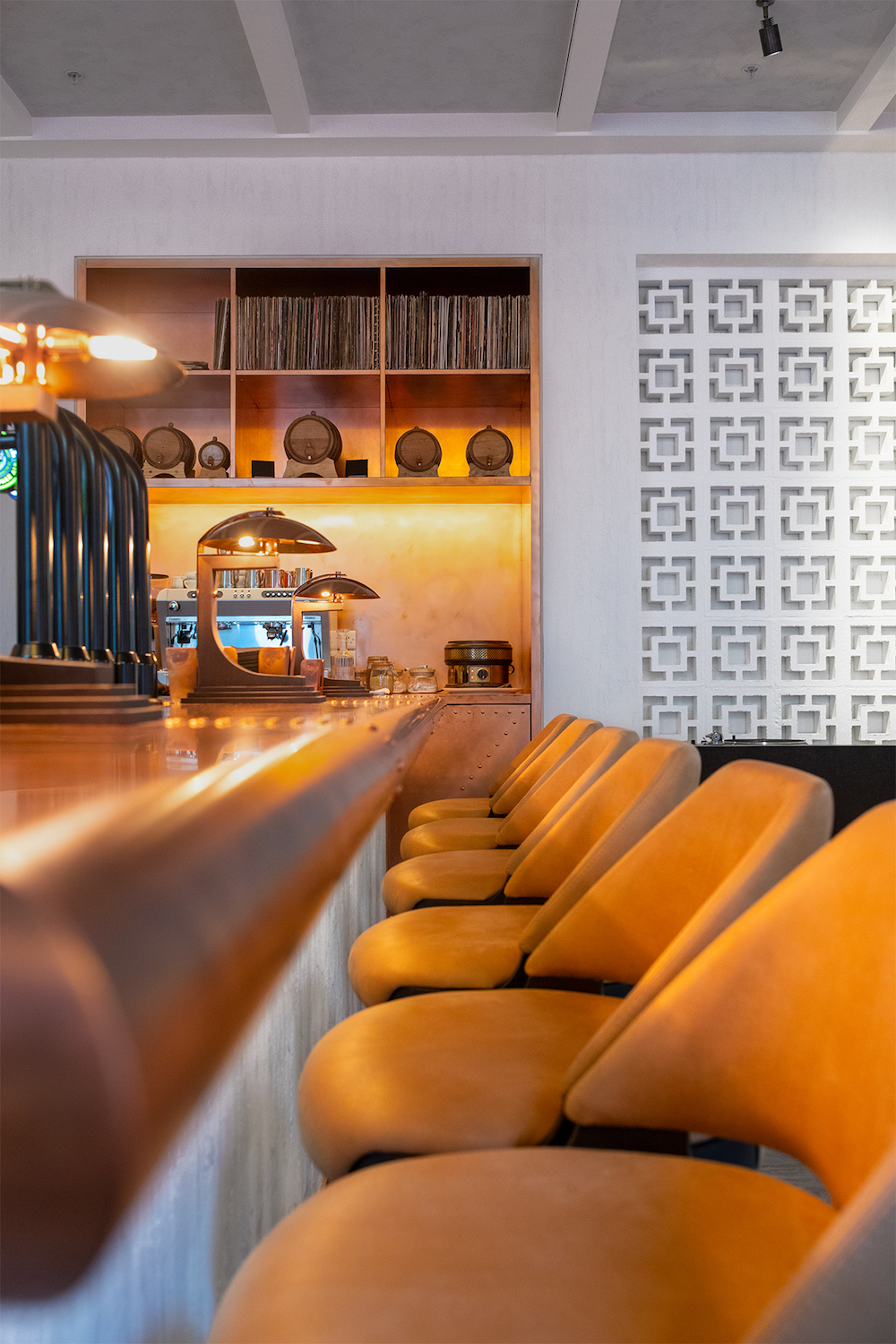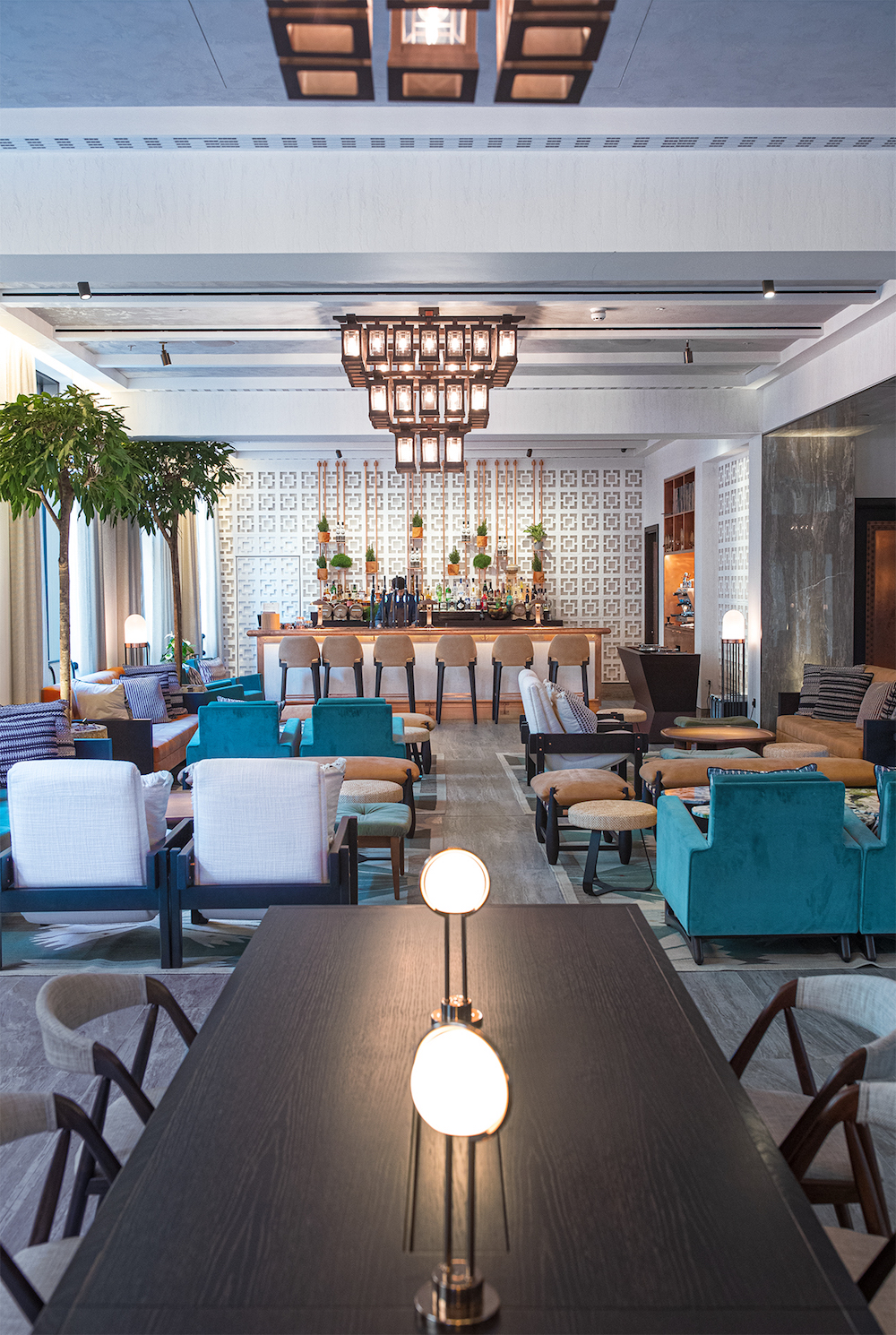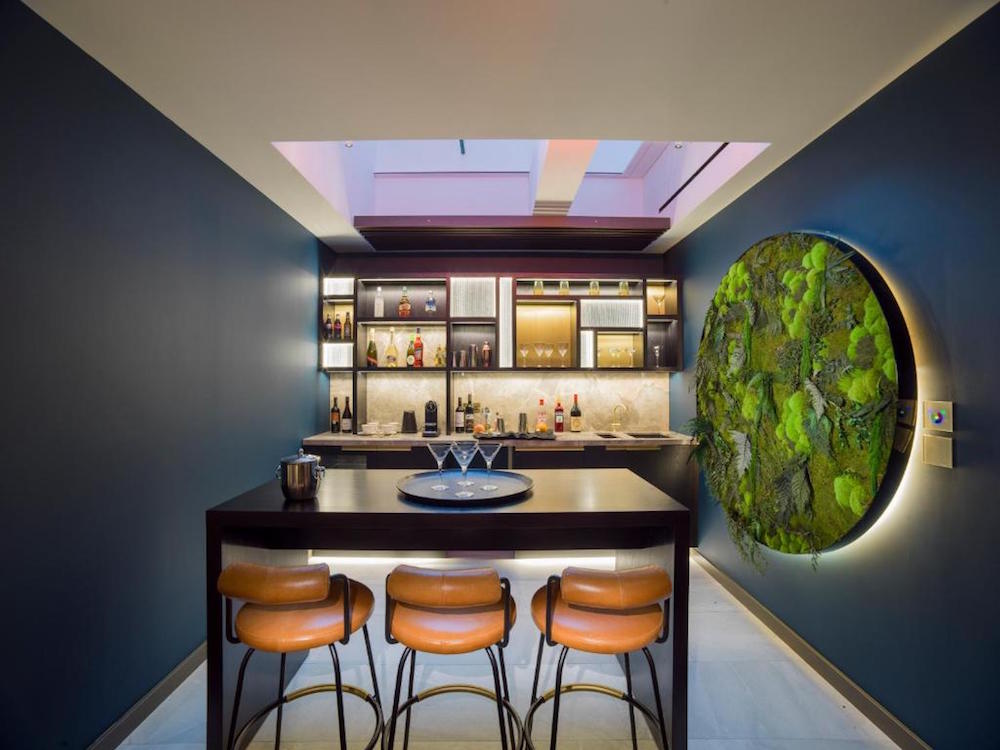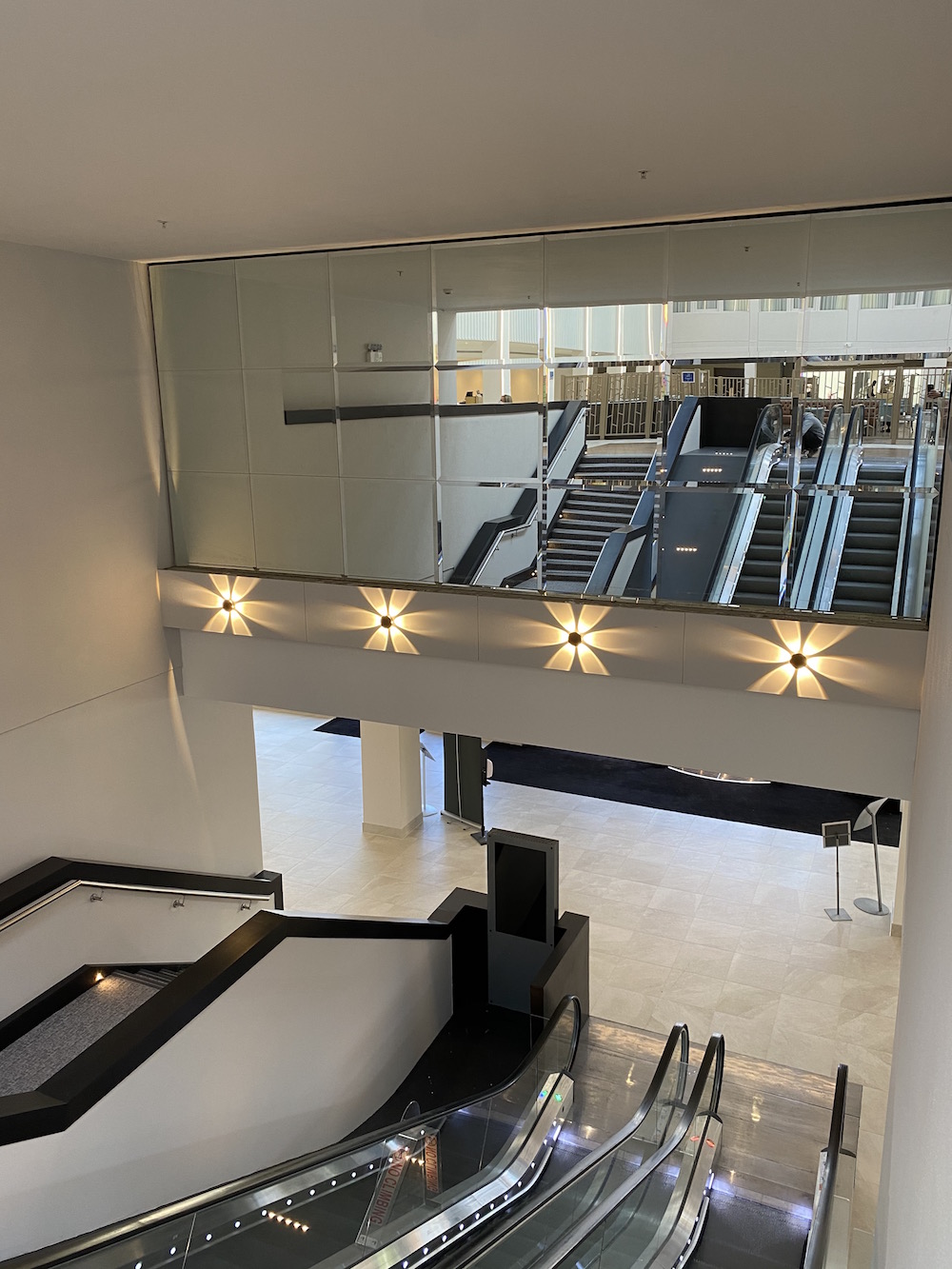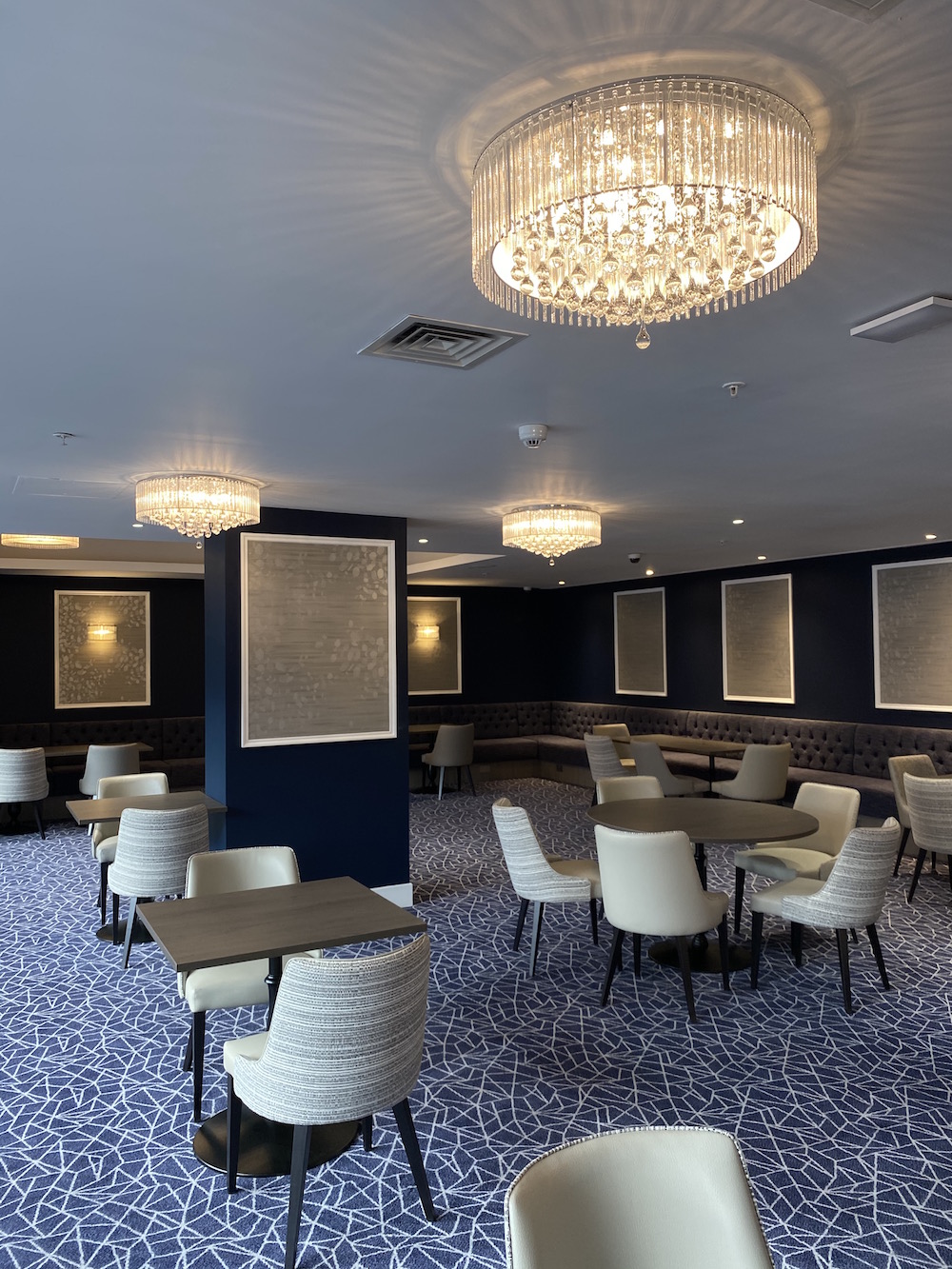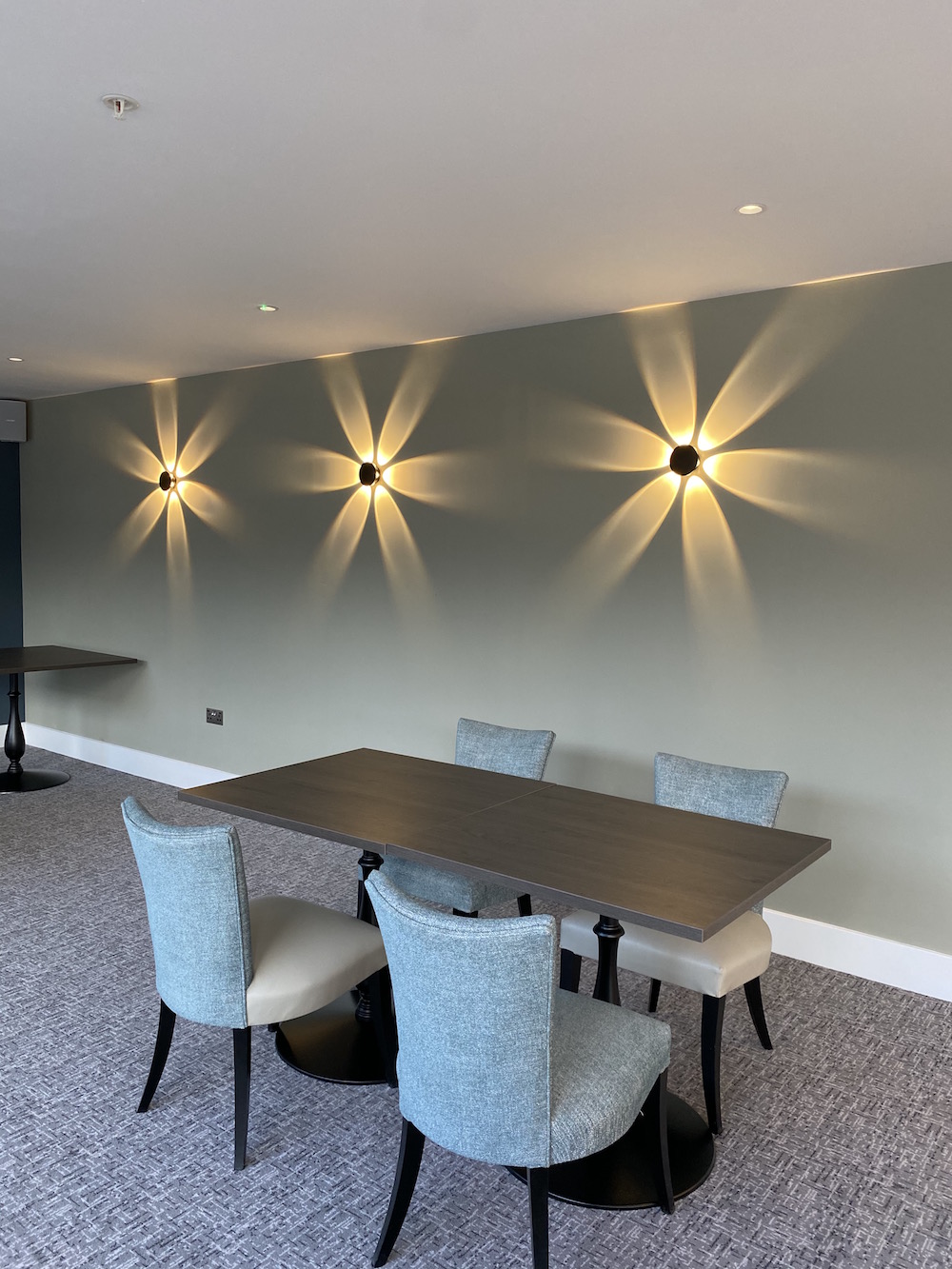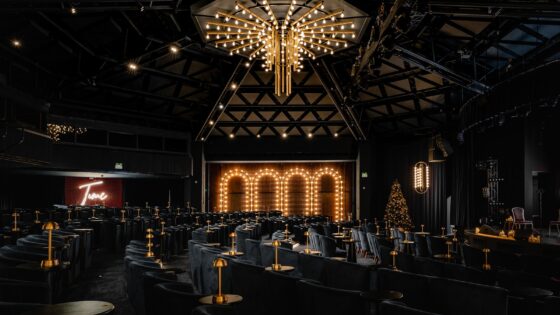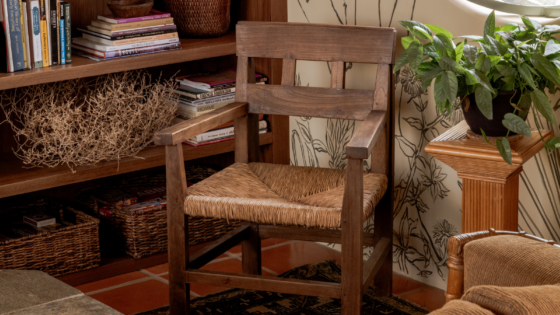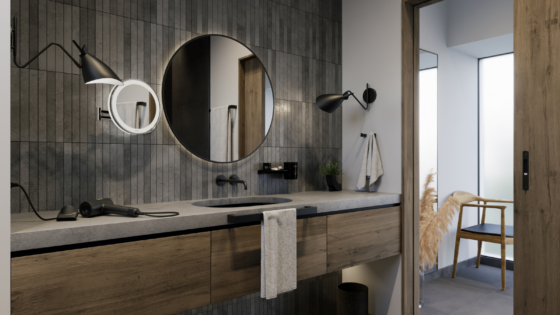With the aim to identify how hotel lighting is evolving in the international hotel design arena, Hotel Designs, in association with Franklite, invites leading interior designers and lighting experts to partake in its next virtual roundtable. From savvy product design to advanced technology – and even the idea of vitamin D lighting solutions – how is lighting in hotels taking centre stage? Editor Hamish Kilburn writes…
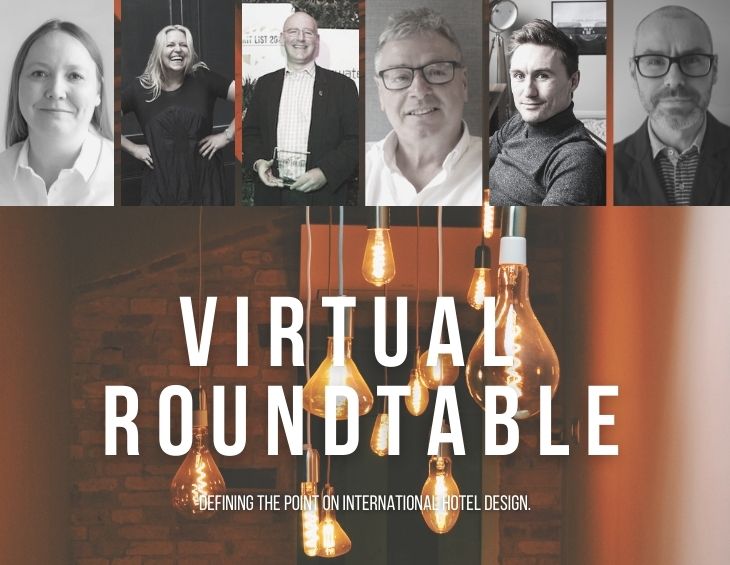
Lighting, especially in the parameters of hotel design, is not a tool. Instead it is an art form, which requires sensitive approach. Often an extension of the interior design scheme – and sometimes the thread that brings the whole scheme together – the lighting design in many hotels that are emerging on the scene in 2021 is breaking boundaries by adding theatre into areas of hospitality that otherwise would be look and feel cold.
When identifying when and how lighting in hotels evolved from practical to experimental, the answer seems to be collaboration; when it became the norm on large projects for interior designers to appoint a lighting designer, not only to elevate the ambiance but also to be the vital source of knowledge when it comes to concept turning into reality.
To understand innovation in lighting in today’s arena, myself and the team at Franklite pulled together some industry experts for our next virtual roundtable.
Meet the panel:
- Interior designer, Ariane Steinbeck
- Sam Hall, Global Head of FF&E, GA Group
- Gary Marshall, Founder, Tonik
- Michael Curry, Senior Associate, dpa lighting consultants
- Mark Lissauer, Director, Franklite
Hamish Kilburn: What are the major innovations that you have seen emerge recently?
Michael Curry: LED technology is a huge innovation that we are dealing with. I have been with DPA now for 22 years, and I am of an age that I believe is quite fortunate; I recall older technology and understood at the time why we used those. Things were clunky, functional but not slick. I think the pre-consumption with lighting design is that it is subjective. Actually, a lot of the time, there is a right and wrong way of doing things.
I’ll be honest, we were really sceptical of LED when it first emerged on our radar. It wasn’t until five years ago when we really started to find good products that were almost the same as halogen in terms of warmth and intelligence. In addition, there’s warm, dim and tuneable whites to consider, which allows the user to personalise the lighting scheme. As a result of this, lighting controls have become almost essential in hotels. However, now there’s a large conversation around lighting automation – not only to benefit the usability of the space but also to save energy – that is very exciting and so important not waste power.
We are also looking at retrofit LED, in terms of decorative lighting but also to converse power while also adding quality to lighting schemes.
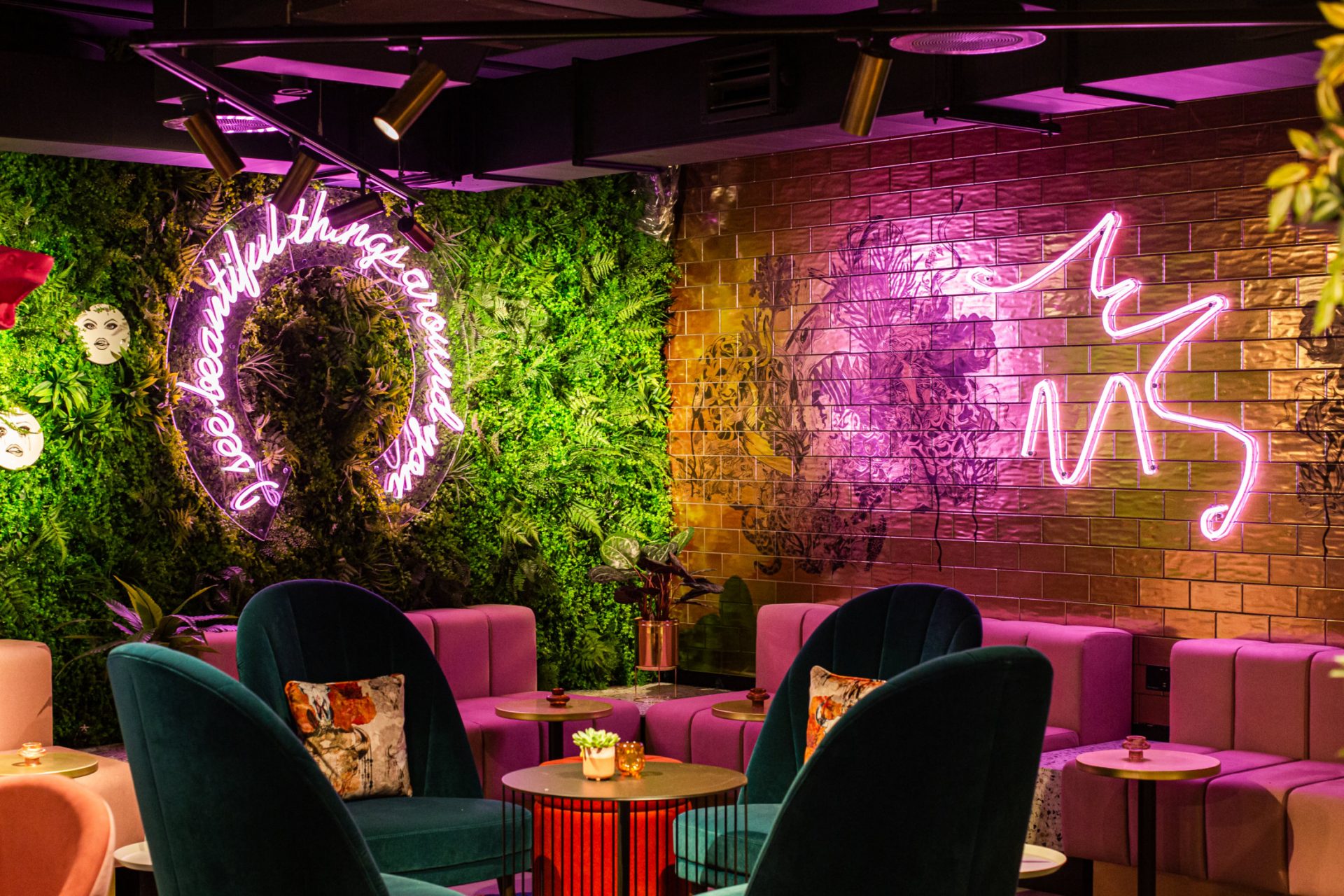
Image credit: YOTEL
Sam Hall: We are actually currently working on a refurbishment in London that was originally completed 15 years ago, and one of the main comments that came back was that the lighting level was just too cold. Now, we can go back in and create far more atmosphere. What’s great about the lighting scheme inside this project is that you don’t notice it – this, to me, is a sign that the lighting has been really considered; it enhances the space and becomes the unsung hero.
At the moment, we are putting a lot of emphasis on sustainability, which to me too often feels like a buzzword. For me, it needs to now also be about longevity.
Ariane Steinbeck: Having a lighting designer on board at the beginning of a project is awesome, but internationally that is usually lagging behind, because people don’t understand the painstaking research that the lighting designer has done and you fall into the risk of a contractor coming in and wanting to just get on with the project, substitute things and really damage all that work in early concept stages. There needs to be a wider and greater understanding of the role of the lighting designer.
Gary Marshall: Clients are now asking about lighting a lot more than they used to, because they are beginning to see the value of good lighting. I think three or four years ago there was more expectation on the interior designer to be able to design the lighting. Innovation comes into it because thanks to technology advancing there is a lot more choice on the market, and with the interior designer and lighting consultant working in harmony the results can be extraordinary. For me, that’s really positive because it’s understanding the value of lighting, which we have always known but I don’t think that was the case from clients. I think that there has been a real mood change.
- Image caption: Tavla bar, with lighting design by DPA Lighting | Image credit: Hart Shoreditch/Gary Edwards
- Image caption: Tavla bar, with lighting design by DPA Lighting | Image credit: Hart Shoreditch/Gary Edwards
HK: Why has it taken this long, do you think, for clients to understand these roles?
GM: My view is that clients are given more choice. Take a hotel corridor for example, you can create completely different effects, using lighting, with what a designer specifies.
MC: Gary, you’re right. It’s exposure and experience. We work on a lot of residential projects as well as hotels. I have noticed in the last 10 years that the managers and head of operations are actually from the design industry and appreciate good design. Quite a lot of the operators, these days, now ask for a lighting consultant to be part of the team.
SH: Technology has become more affordable, and picked up by consumer brands. Good lighting is now more accessible in everyday life. When that happens, it puts pressure on the industry to keep up and stay ahead.
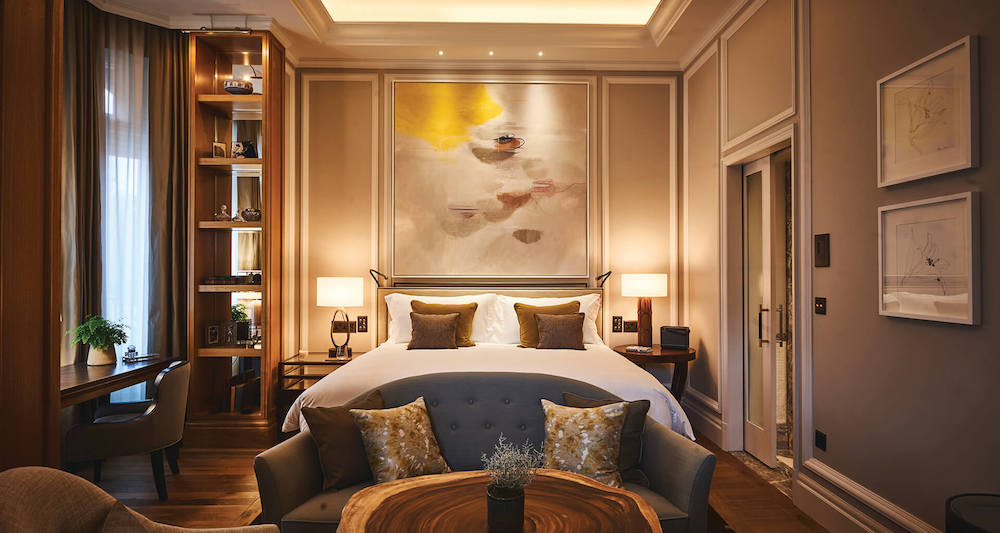
Image caption: Junior suite inside Belmond Cadogan Hotel, designed by GA Group. | Image credit: Belmond
HK: How important is lighting when defining some of these lifestyle brands that are emerging on the international hotel design scene?
MC: Sam mentioned ‘unsung heroes’ and I completely agree. A lot of time, the lighting product itself is out of sight but we make the interior look spectacular. In terms of branding and signage, you can make the lighting and the products look appropriate for that brand. We as lighting consultants, tend to interfere when needed in order to ensure all areas of the lighting looks exceptional, which I think really amplifies brands’ look and feel as a quality hospitality establishment.
AS: Lighting is such an integral part of the overall design. In my 30 year career in the industry, even ‘lower end’ brands will insist on a lighting designer, not only for looks but also for the economy that good lighting can bring to a company’s bottom line. I see a much greater integration between interior design and lighting disciplines. And I think some of the more sophisticated clients insists on doing things that are intuitive yet simple to operate. With everything, the more simple and more stripped away the experience is, the harder you have to work to ensure that it works behind the scenes.
GM: From a brand point of view, brands across all sectors are battling to get closer to their customer. If you take away the functionality of a brand, it becomes all about emotions, values and that in itself becomes more sensory. Some would argue that there is nothing more sensory than lighting.
HK: Are travel trends dictating the way in which you light a space?
MC: I suppose they are. Take the Instagram moment for example, and having to change moods within spaces. We are working on a project at the moment in Moscow where this is a big draw for the client, in order to, as Gary was saying, reinforce the brand. It comes down to comfort.
SH: I think it depends on the brand, to be honest. On a younger brand, the lighting has more presence. A few years ago we did the W in Shang-hi and the lighting is the artwork. Whereas if we were working on a hotel in a heritage building, then it becomes more subtle. Equally there are hotels that use lighting to enhance wellness and the consumer journey – so yes, lighting is absolutely changing as a result of travel trends and modern traveller demands.
HK: Gary, I wanted to highlight one of your projects, Middle Eight, where you created an immersive, modern suite that had no windows, therefore lacking natural lighting. Talk us through how you designed these areas to become the hotel’s premium suites…
GM: We broke all the rules with that location. More often than not the most expensive suites are located at the top of the hotel in order to create privacy but also to utilise views. We were repositioning the hotel from a run-of-the mill hotel in London into a luxury/lifestyle hotel. We decided to take what were the meeting rooms on the first floor, which had a light-well on the ceilings in the centre of the room. We were able to punch roof lights in and we wrapped the living spaces around this interior courtyard, if you like.
- Image caption: The suites inside Middle Eight were designed by Tonik without traditional windows credit: Middle Eight/Preferred Hotels and Resorts
- Image caption: The suites inside Middle Eight feature light-wells in the ceiling. Image credit: Middle Eight/Preferred Hotels and Resorts
To ensure we achieved a premium lighting scheme in these premium suites, we ensured that guests could change the lighting setting through the means of very simple controls.
HK: What would you say at the major pitfalls to avoid when creating lighting schemes?
SH: When you are working internationally, it’s very difficult to ensure everyone has the same intent, and that’s where good communication and strong relationships come in.
AS: For me, one manufacturer’s lighting element is not the same as another manufacturer’s lighting elements. They may look the same in image, but unless you touch the elements you really can’t tell whether it’s a quality product. Because everyone is so connected now, you can’t tell if a product element is ‘equivalent’ to another product without touching it.
Mark Lissauer: That’s a great point. We have lots of distributers around the world, and a year and a half ago we decided to open our own office in the Middle East. Whilst all the designs are specified in the UK, our connection to our distributers were losing when it came to going to site. Now, with this investment, we are able to streamline the process.
- Image caption: Lighting inside Hilton Gatwick, supplied by Franklite. | Image credit: Franklite
- Image caption: Lighting inside Hilton Gatwick, supplied by Franklite. | Image credit: Franklite
- Image caption: Lighting inside Hilton Gatwick, supplied by Franklite. | Image credit: Franklite
HK: Another area Franklite has invested in is its research and development with its own testing equipment on site. Perhaps you can tell us more about that…
ML: Michael was saying earlier reducing from 40 watts per square metre to 20 watts per square metre. With the photometer, we can give all the circuit wattages for that. Hopefully, this enables us to prove how our USPs in products are benefiting the overall look and feel of design schemes. We have just invested in this marvellous machine that looks at flicker, the flickers that are subliminal that could be impacting the quality of guests’ wellbeing.
HK: Let’s end by talking about Brexit. Has this resulted in designers being more aware of British manufacturers?
SH: Unfortunately not! There is a change from the project team. We are working on a number of projects in mainland Europe where they are wanting us to specify products from mainland Europe, which is great from an eco-perspective, but it does mean that we have to be more knowledgeable when it comes down to what certain brands can do and what their strengths are – and not trying to do something that’s not natural for that area. It is causing issues, and the general speed of sampling is also very difficult.
Equally, we have UK projects that are really championing only looking at manufacturers in the UK, which has been really refreshing to find even artisan manufacturers. That, for us, has been a game changer because it impacts every project.
GM: The gestation period of a hotel project is so long, we are just getting to the point now where it becomes more of an issue. I envision it becoming more of an issue and I am anticipation that situation.
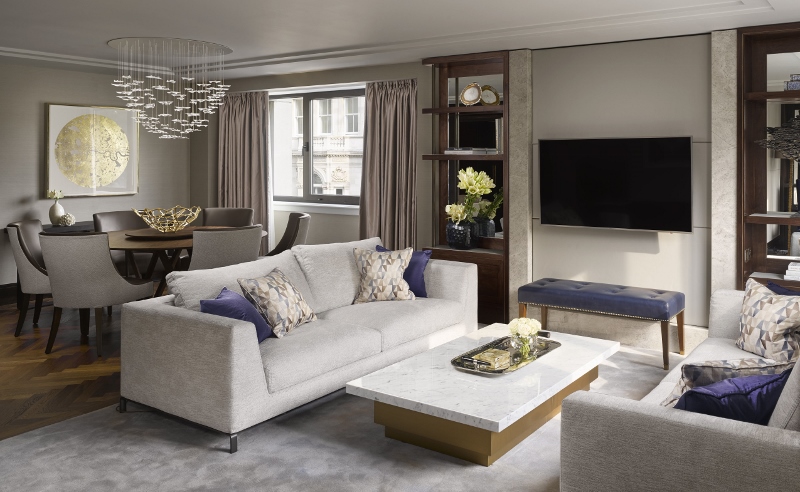
Image caption: The Capital Suite inside InterContinental London Park Lane, designed by RPW Design (Ariane Steinbeck). | Image credit: Will Pryce
HK: What else in lighting has inspired you recently?
AS: I want to know why we can’t incorporate that healthy spectrum of vitamin D to counter the deficit of natural light we don’t get during the winter,
I want know, especially in northern hemisphere where there is a deficit of sunlight in the winter months, why can’t we, with our sophisticated tech, launch a product that incorporates a healthy spectrum of what we need for our skin to produce vitamin D during these months.
MC: We have heard about this. It was a little while back a bit of a buzzword and idea, but it is just how we get that design into a scheme. The whole conversation around circadian rhythm is very interesting and we should always be thinking about it.
ML: We have just launched our L11 Tuneable White Light engine, which gives the user much more control – and we are absolutely now looking at replicating the health qualities of natural light.
Franklite, which won Best in British Product Design at The Brit List Awards 2021, is one of our Recommended Suppliers and regularly features in our Supplier News section of the website. If you are interested in becoming one of our recommended suppliers, please email Katy Phillips.
Main image credit: Unsplash

